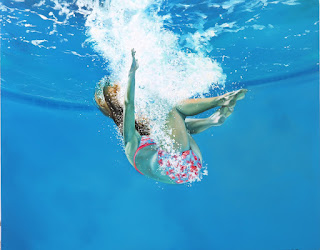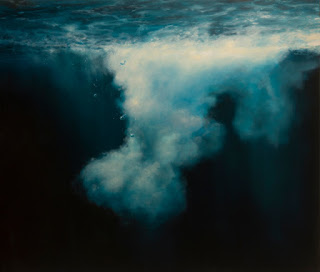Friday, December 7, 2012
An update of the happenings at Hespe!
Exciting news
from Hespe Gallery!
Our good
friend and master of representational tides, Eric Zener, will be extending his
most recent show through December in our new, beautiful 2nd floor
gallery space! We are concurrently hosting a spectacular group exhibition
for the holidays featuring works by Kim Cogan, Erin Cone, Lawrence Gipe,
Marianne Kolb, and Hiroshi Sato. Come visit our gallery in the heart of Union
Square, where the holiday spirit is alive.
Saturday, October 20, 2012
Thursday, October 4, 2012
Marianne Kolb, Storrow Drive/North Station at Hespe Gallery
Hespe Gallery is pleased to announce a solo exhibition of new works by Marianne Kolb. An opening reception will be held on Thursday, October 4, 2012 from 5:30 – 7:30 PM. The exhibition will continue until October 27, 2012.
Storrow Drive/North Station references an unidentified photograph in which an elderly woman stands laden down with bags. Marianne Kolb, upon seeing the image, misread the title as "sorrow drive". That happenstance was a catalyst for a body of work that addresses stereotypes, misperceptions and societal interaction.
In her exploration of the human condition, Kolb uses materials as a guide, revealing layers in a tangible metaphor. In this pursuit, Kolb is convinced that the boundaries of our physicality both define and separate us from each other; the underlying depth, a representative of the ideal.
In her exploration of the human condition, Kolb uses materials as a guide, revealing layers in a tangible metaphor. In this pursuit, Kolb is convinced that the boundaries of our physicality both define and separate us from each other; the underlying depth, a representative of the ideal.
Saturday, September 8, 2012
Kim Cogan in SF Chronicle!
Cogan on the beach: When I learned that San Francisco painter Kim Cogan had undertaken seascapes, I thought he might finally have overreached.
A prodigious painter of architecture and light, Cogan has revivified both the San Francisco cityscape and the realism that he practices to describe it. But as his recent pictures at Hespe attest, the ocean presents very different challenges.
For one thing, the ocean never stands still - the opposite of architecture in that respect.
Cogan found that fixing a credible image as a starting point required synthesizing information from unnumbered photographs, yet no one will mistake the finished paintings for photo-realism.
Cogan's technique, regardless of the subject, yields something less explicit than a photograph or even a focused gaze. In that sense the misty atmosphere of a light-starved picture such as "Wave No. 19" (2012) suits him perfectly.
The elliptical shape of Cogan's wave pictures will disturb some eyes at first, though a considerable tradition lies behind it. He chose the ellipse because its two foci create a visual sway that suits the subject.
Yet, impressive as they are technically - they can even stand comparison with Winslow Homer's seascapes - Cogan's wave paintings have an air of demonstration pieces about them, of mere triumphs of determination over artistry. Hespe has wisely included some of Cogan's rectangular canvases, though several of these also, especially "Surf Motel" (2012), evoke oceanside moods and light.
Read more: http://www.sfgate.com/art/article/Inaoka-exposes-omens-in-sculpture-relics-3848067.php#ixzz25uBnUI4Q
Kim Cogan: Sea Change: Paintings. Through Oct. 2. Hespe Gallery, 251 Post St., S.F. (415) 776-5918. www.hespe.com.
Kenneth Baker is The San Francisco Chronicle's art critic. E-mail: kennethbaker@sfchronicle.com
Read more: http://www.sfgate.com/art/article/Inaoka-exposes-omens-in-sculpture-relics-3848067.php#ixzz25uBvo0G8
Saturday, September 1, 2012
Kim Cogan Sea Change, September 4 - October 2
Known for his atmospheric city portraits, Cogan was moved to rethink his approach to composition and technique. After years of working with rigid, angular structures on quadrilateral canvases, Cogan decided to compose his wave paintings on oval panels. “Ovals mimic the cylindrical, free-flowing shape of the wave,” he says of his chosen form. “I wanted to design a unique approach to depict the waves on a surface that has no corners or straight edges.”
Trained to work from observation, but unable to work from life, Cogan’s process involved the piecing together of thousands of photos in an attempt to capture the singular moment of a breaking wave. The finished paintings are referenced from several photographs, assembled together in sporadic brushstrokes to convey a sense of motion, color and mood.
Sea Change is both a meditation on and representation of a transformation for Cogan. It is a progression that captures the ever-shifting process of an artist’s work.
Saturday, August 4, 2012
Lawrence Gipe in ArtVoices Magazine, August/September 2012 by Shana Beth Mason. pg. 105-106
If the first sound of an exhibition is any sort of loud, indiscernible boom or buzz, it usually signals an angry, postmodern film installation or individual video work that could repel even the most seasoned viewers. But when that sound is tempered by a series of carefully drafted images of saints bearing crosses, angels hovering inside stone buttresses, and one haunting relief of Christ in the arms of Mary (her heavenly visage replaced by an empty wooden scaffold), it deserves a second thought and look (or at the very least, respect for its brazen ambitions). Lawrence Gipe’s solo exhibition In the Valle De Los Caídos at Primary Projects in Miami is one such example: a single video work surrounded by paintings resembling the scale and tone of Jacques Louis-David or Rubens, except its “heroic” figures are pulled from a more recent thread of history.

Lawrence Gipe, No. 2 from In the Valle de Los Caidos (Statue and Cross), Mixed Mediamedia on canvas, 108” x 72”
Centered on the basilica in the Santa Cruz parish of Valle De Los Caídos, or Valley of the Fallen, just outside Madrid, Gipe delivers a series of large-scale paintings revealing architectural and figurative slivers of the church commisioned by Generalissimo Francisco Franco. The fascist leader’s megalomania reached its zenith with the construction of this site in the 1950s, sanctioned as his own personal mausoleum. Repeated images of Catholic saints, the apostles, and the Holy Family were, in effect, the dictator’s personal bodyguards. Gipe’s canvases recreate these sculptures in bluish, gray, and brown tones, as if his viewers were examining an active blueprint of the church. Gaping voids and negative spaces push these images into the realm of the postmodern, less focused on hermetic protocols of idol worship and iconic contemplation. The structure itself is the main attraction for Gipe, harboring memory and trauma as effectively and tellingly as the human brain. Fields of menacing darkness mark these works, with tonal gradients used in a fashion similar to the literary foreshadow: the unknown, untold secrets of this site are even more poisonous than what remains in plain view. Archangels appear more like fearsome soldiers than comforting spirits, figures surrounding the cross are flanked by razor-beaked eagles, and all of the major architectural features are lit from below in order to dwarf even the bravest visitor. Every element of this basilica bears the unmistakable mark of a zealous warlord, one who commits the ultimate act of sacrilege by asserting his invented sovereignty with and within a sacred Christian site. Furthering adding to the church’s clouded history are allegations that the basilica claimed the lives of Popular Front prisoners of war during its eighteen-year construction.
The aforementioned booming sound emanates from a tiny project room within the winding gallery space. Behind a black curtain, a looped clip from the comically terrible 1979 spy thriller Jaguar Lives! shows the monumental cross of the basilica explode into a fireball, accompanied by a thunderous heavy metal soundtrack (complete with an all-male choir). A laugh, even an under-the-breath chuckle, is inevitable. This addition becomes essential to the exhibition in offering a reprieve from an otherwise depressing, ominous atmosphere. Gipe could easily fall into the trap of a beautifully made “haunted house,” but instead uses irony and parody to strengthen the aesthetic conversation: a site once signifying religious pilgrimage, turned into a house of self-worship by a powerful politician, now a hotspot for illegal demonstrations by Franco’s supporters (called Falangistas), continues to evolve and evoke popular fascination. Nostalgia is a term Gipe largely favors for his practice, but that particular grade of longing or revival of past environments and circumstances is not at work here. In the Valle De Los Caídos concerns itself and its audience with a past worth forgetting, one that regardless of its level of intrigue belongs to a period of suffering and oppression. Gipe’s skill emerges in his maintenance of that intrigue without sacrificing the gravity of historic factuality; primary research is key to this setup, but it is delivered with a degree of sensitivity. He chooses to reinvent an episode of post-World War II Spain without speeches, propaganda, or anything that might suggest a pure replication of an individual’s agenda. The works are magnified to the scale of the pompousness of Franco himself, beyond a tourist’s observation or an activist’s memory. Gipe captures the simmering anxiety of a dictator who probably feared being left out of the history books more than military defeat or death.
Contemporary art bearing the burden of commentary on international politics and their messy histories is a pertinent facet in the public consciousness, past occurrences largely motivating these observations. Gipe’s topic of choice comes precariously close to falling under the Jeopardy! trivia realm, but gracefully addresses a larger, more urgent matter: a matter of metamorphosis. High-profile artists such as Jake and Dinos Chapman, Allora & Calzadilla, Martha Rosler and Alfredo Jaar have discussed (and continue to illuminate) the possibilities attached to bureaucratic bodies experiencing ideological and structural collapse, all the while engaging viewers at a level beyond didactic lecture or physical text. Gipe follows a similar path, utilizing the resilience of painting as a conductor. Appropriated imagery is only the foundation; Gipe ignites the magnificent yet destructive nature of monument and man, resulting in a site that beggars definition, but not description.
Wednesday, July 11, 2012
Eric Zener and Kim Cogan at Hespe Gallery
Thursday, July 5, 2012
Amberlee Rosolowich at Hespe Gallery
Amberlee Rosolowich's new works are now on display at Hespe Gallery. The opening reception is Thursday, July 12, 5:30-7:30.
Thursday, June 28, 2012
Hiroshi Sato at Hespe Gallery
Last few days to catch Hiroshi Sato's sold out exhibition at Hespe Gallery! Closes on Saturday, June 30th.
Friday, June 8, 2012
Subscribe to:
Posts (Atom)



























































